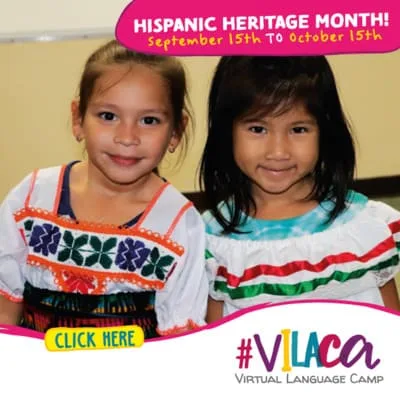Looking for fun and educational ways to teach your kids Spanish at home? Check out these four traditional Spanish games! They’re a great way to get the whole family involved and practicing their Spanish skills in a relaxed and enjoyable setting.
Traditional Spanish Games for the Home
Picture the scene: Your kids just got home from school, or they just finished their regular homeschooling classes. After a quick snack and maybe a cartoon break, you are excited to keep the Spanish learning going with them. Which of the following sentences is going to be more effective to motivate them to learn?
“Ok kids, time to stuff your already tired brains with yet more vocabulary!”
OR
“Hey, who wants to play a game?”
Obviously, the second choice. As creatures of play, children (and to be honest, most adults) all around the world prefer to learn through interaction, engagement, and fun, rather than repetition and schoolwork. Here are a few easy and fun traditional games we’ve picked up from various countries in South America to play with your kids and keep the Spanish learning going:
Veo Veo or ‘I spy.’
It’s popular around the world and doesn’t cost a single dime, or peso, if you prefer. In Spanish speaking cultures, one person says “Veo veo alguna…” (“I spy something…”) and then fills in the blank with an adjective of something they see (for example: blue, squishy, pointy, etc.). The other person will start naming items around the room that match that adjective until they guess the correct item. A great game to practice identifying and describing everyday items.
Juego de Sapo or ‘Choke the Frog.’
Don’t worry, no frogs are harmed in the playing of this game. Some say that this game got its name because on holidays, the ancient Inca people threw pieces of gold into the lakes, and if a toad jumped and ate the piece, it turned into gold and a wish was granted to the shooter.
Played in Spain, Peru, Uruguay, Ecuador, Bolivia, Argentina, and Colombia, among other places, Juego de Sapo is essentially a coin-toss game involving a large board with holes and an open-mouthed frog in the center. A simple coin and bowl or bucket will do, and you can use this game as an opportunity to practice Spanish numbers by count points in Spanish.
La Verdadera Destreza or ‘The True Skill.’
Though there are many, ‘true skills’ in the world, this particular game refers to the fine art of fencing, said to have originated in Spain and to be one of the oldest games in existence.
Though in no way do we advise giving sharp objects to children, the inside of a paper tower roll or paper and tape (or nowadays, a toy lightsaber) will make for an epic battle of the imagination. So, maybe this one doesn’t have the most vocab practice, but it sure is good for getting the energy out.
El Repollo or ‘Hot Potato
Originating in Nicaragua, this is a good group game for the entire family or if friends are over. Everyone starts by writing down a question on a piece of paper in Spanish. Then, the papers are wrapped around each other to form a ball that looks like a cabbage. As the ball is thrown around the circle, each person peels off a “leaf” of the cabbage and answers the question. Have quality time together learning more about your family and friends, while practicing your Spanish grammar.
These are only 4 of the thousands upon thousands of games available to play at home. We encourage you to start with these and look up more on the internet so that the next time your child says, “Mom, I’m bored” or “I don’t want to do another worksheet,” you’ll be ready to meet them with some Spanish learning fun!
If you’re eager for more tips and resources on teaching Spanish to your kids, don’t hesitate to reach out to us. Click here for additional assistance and guidance. Let’s make language learning a thrilling journey for your child!







